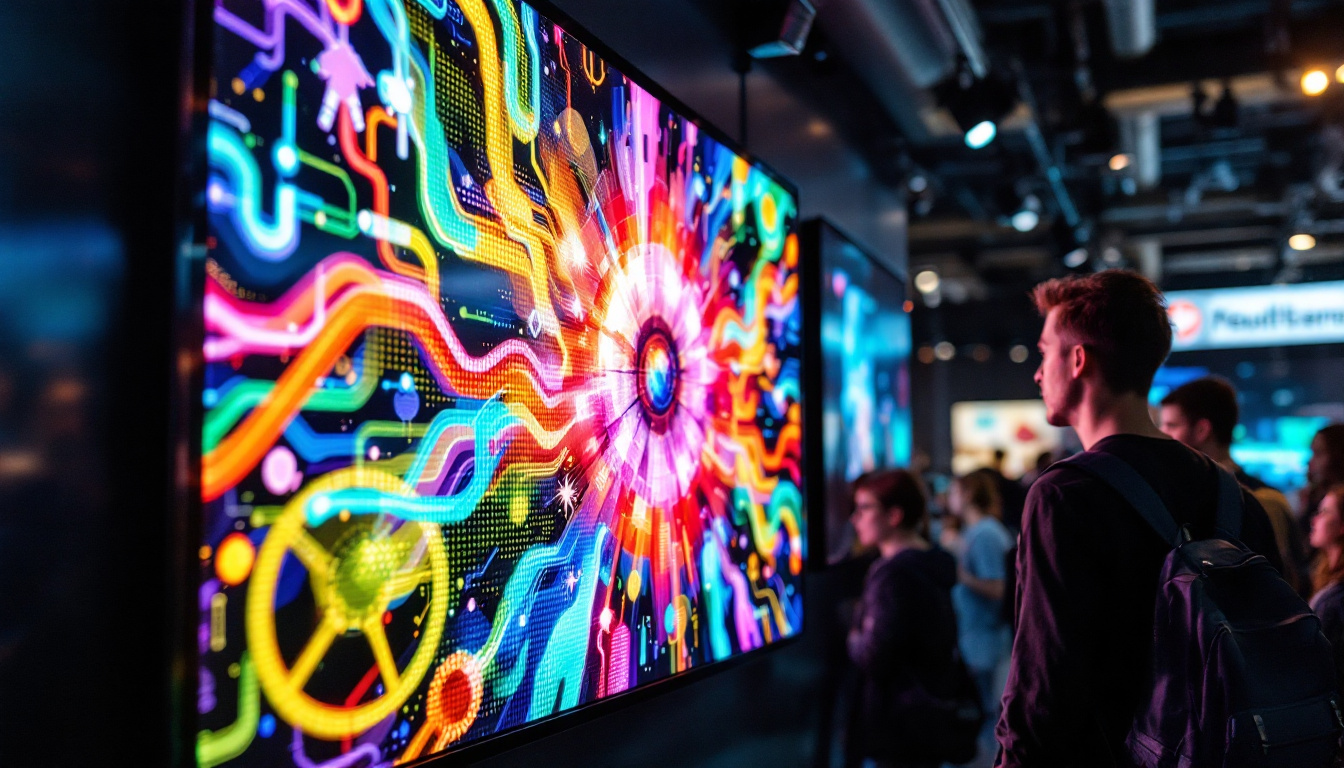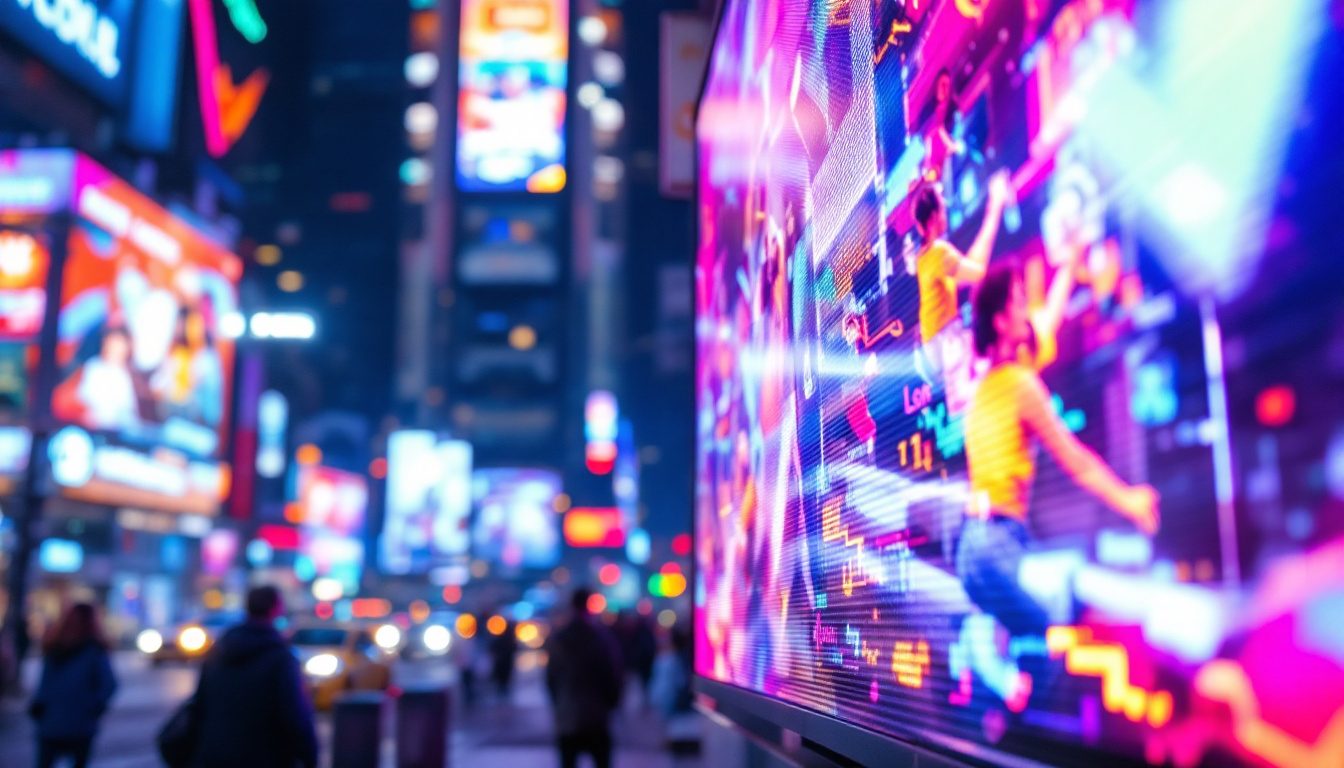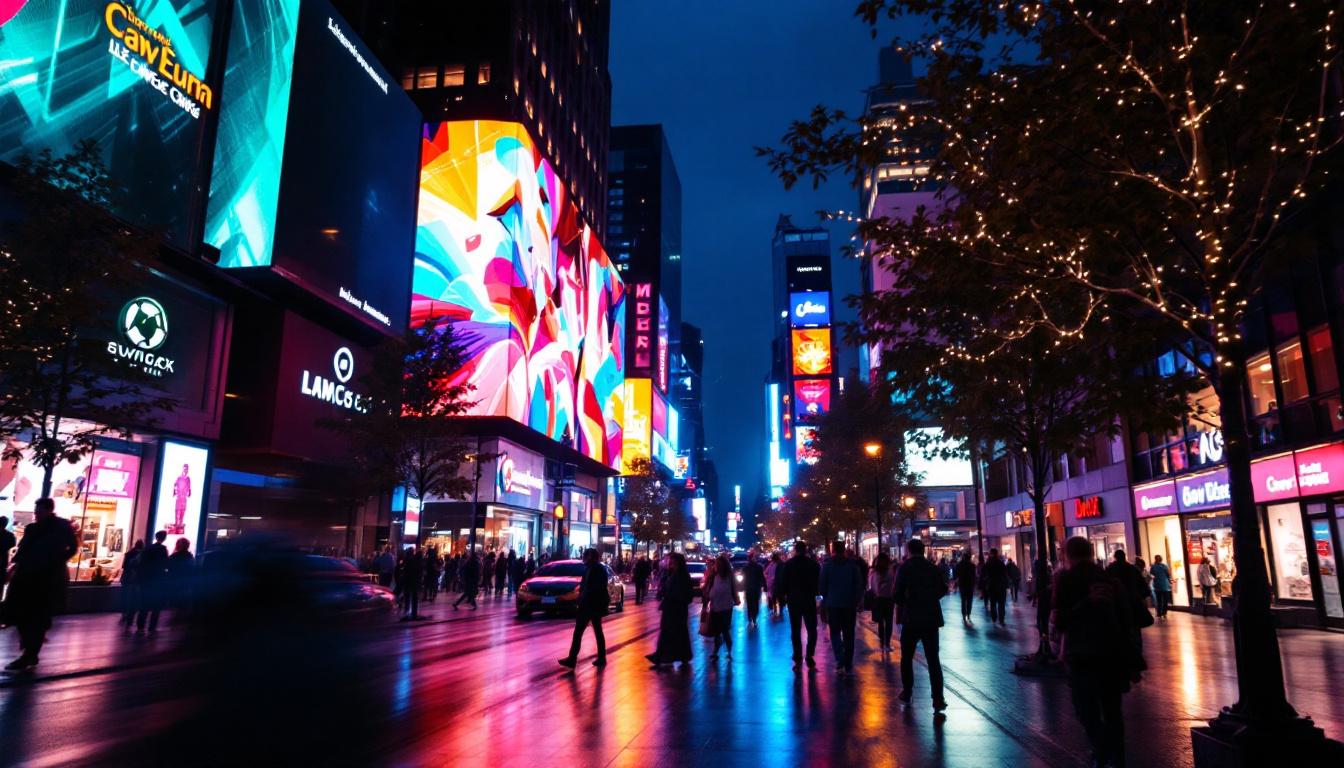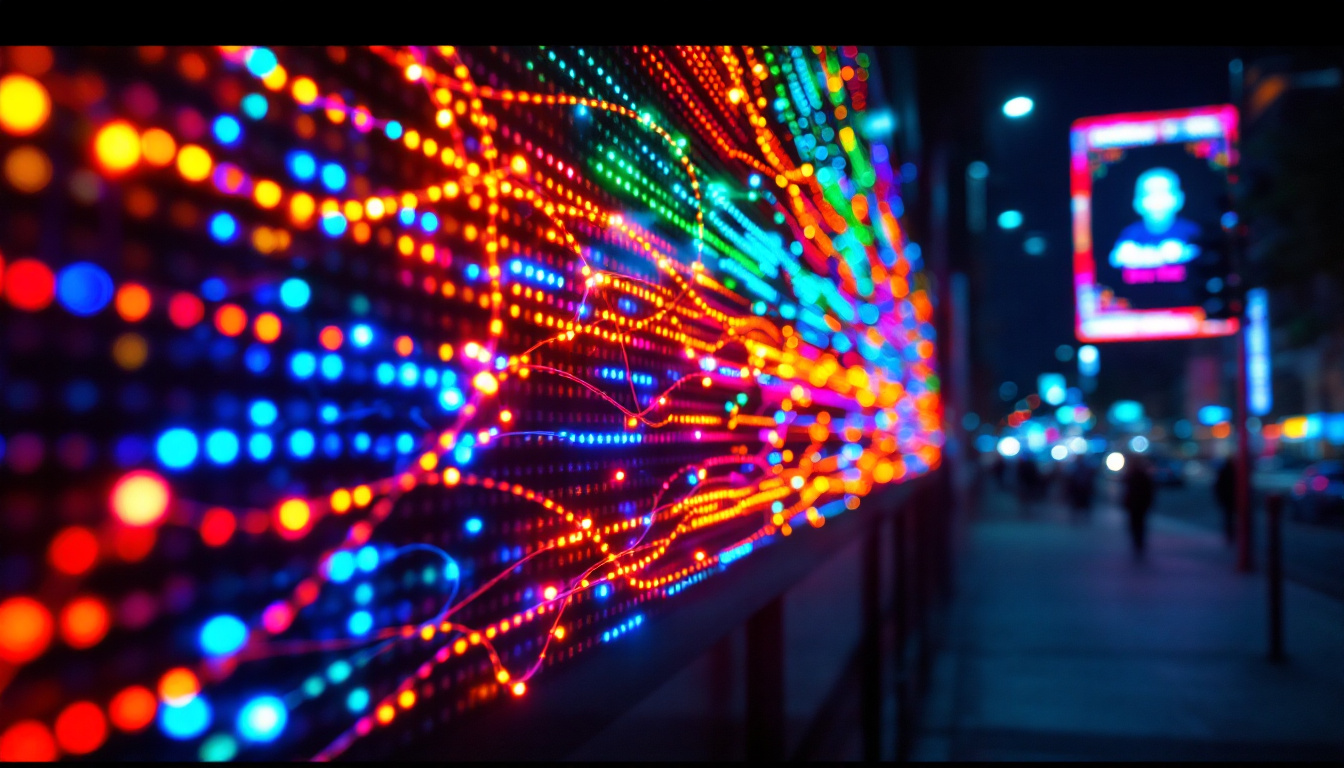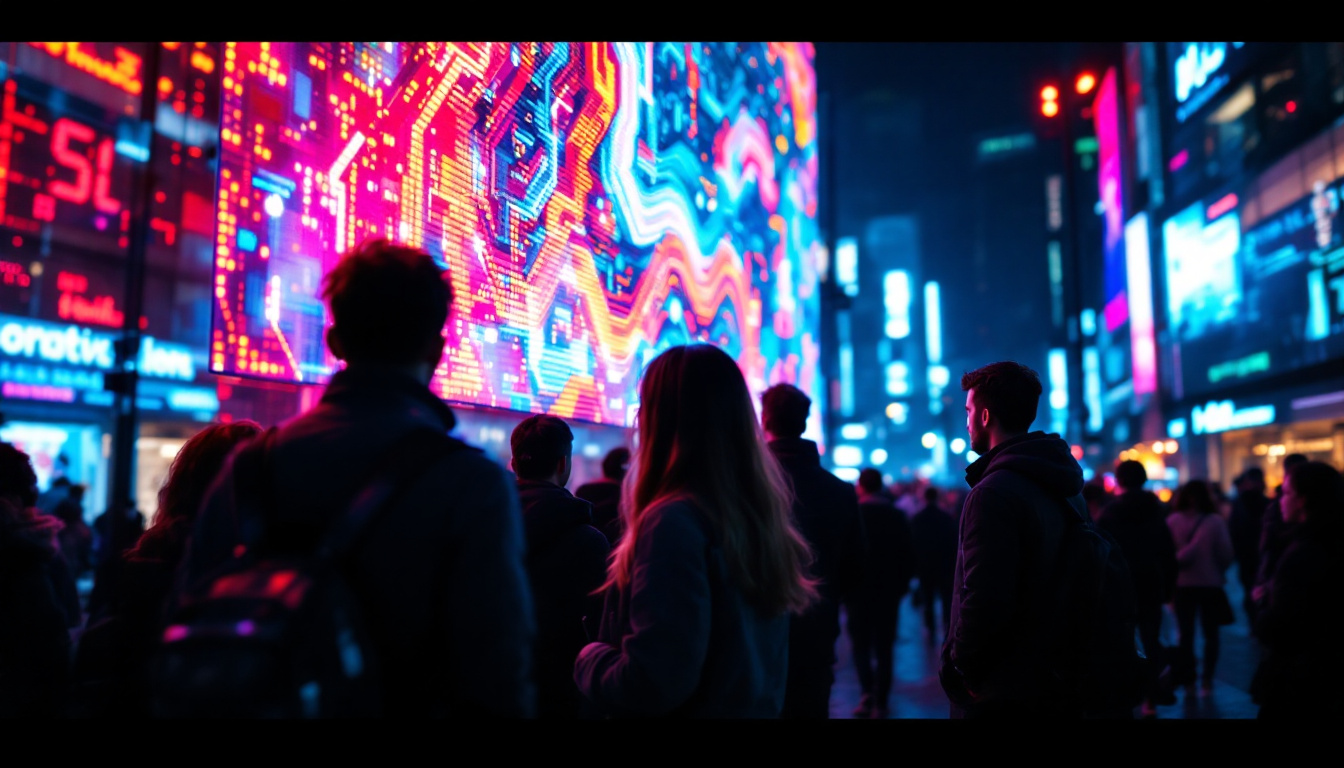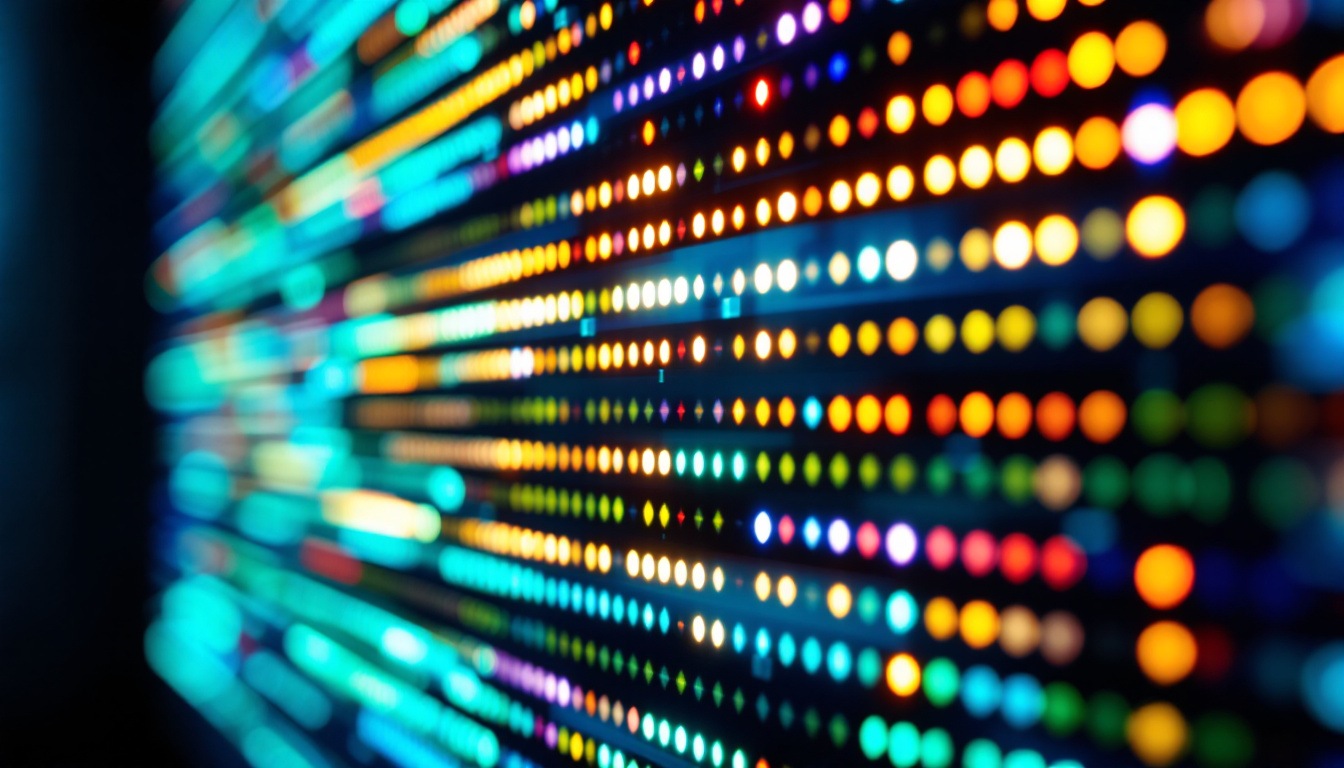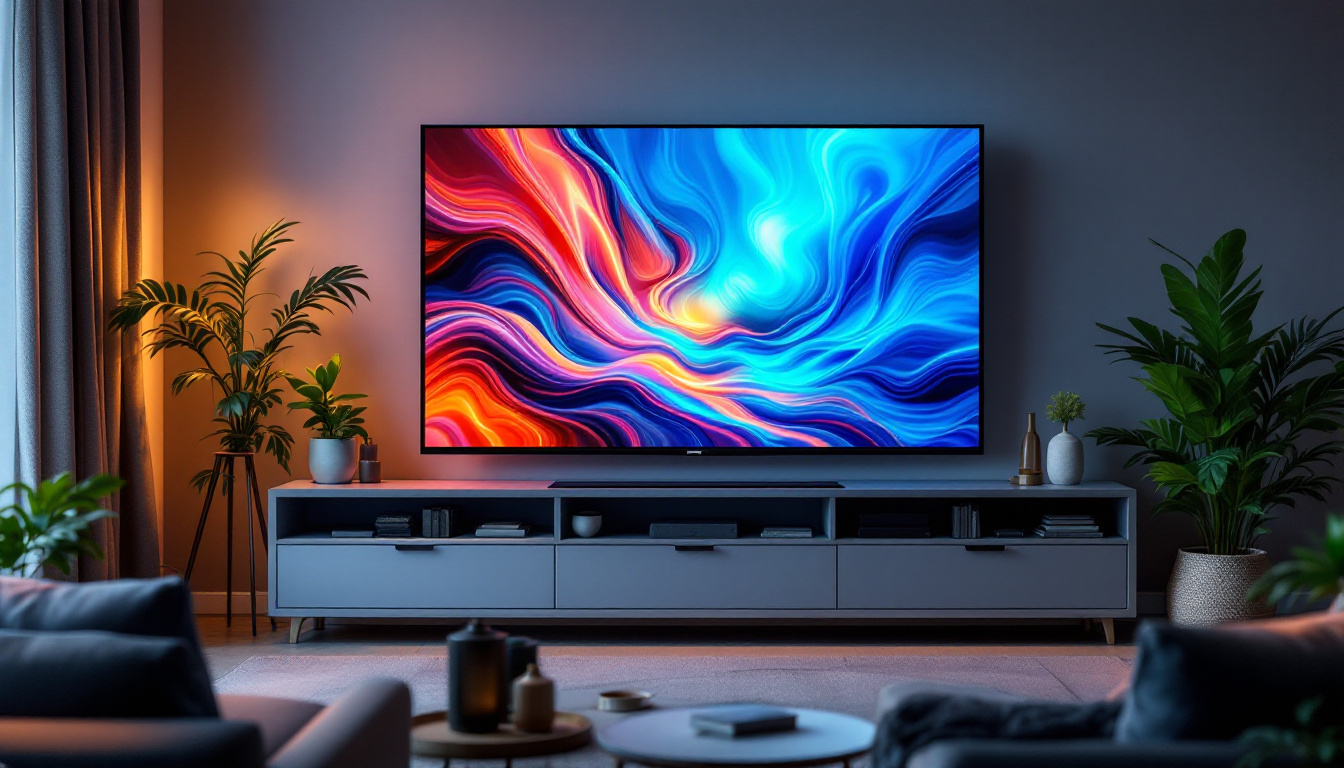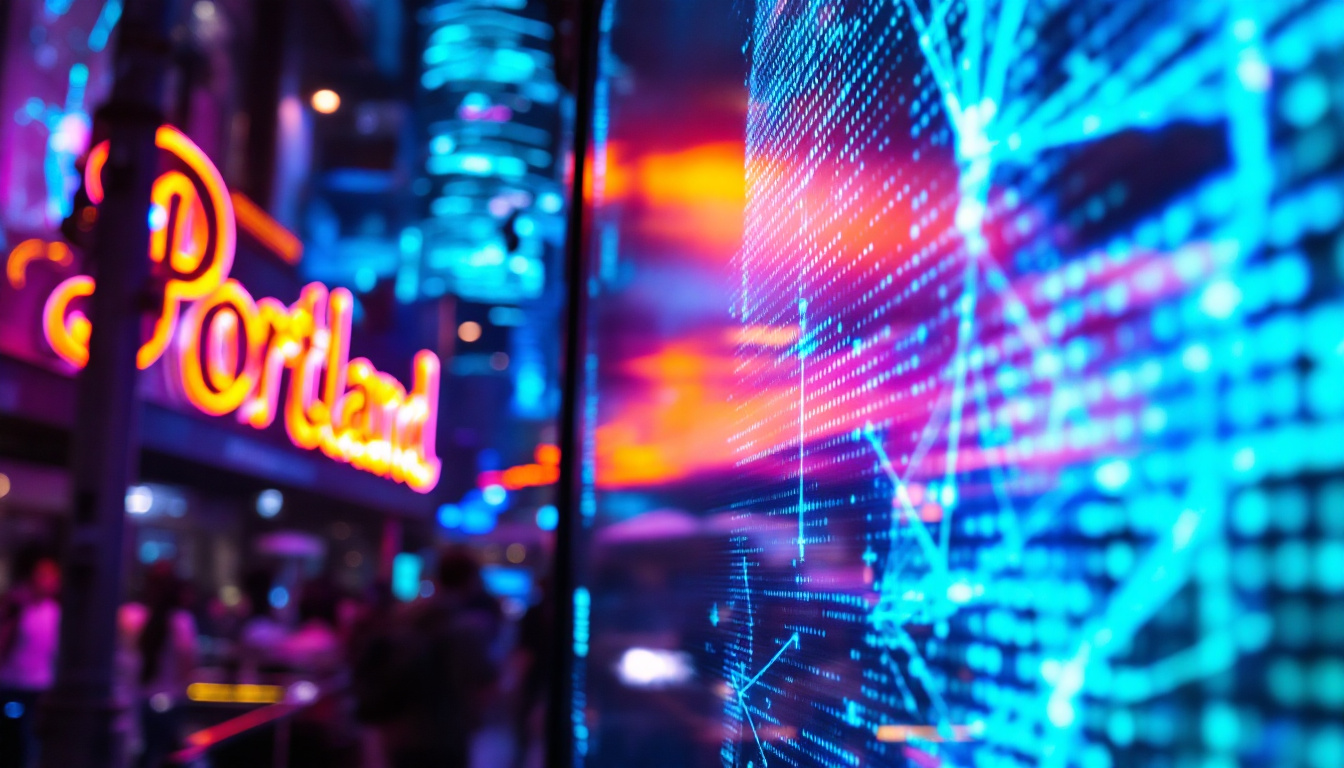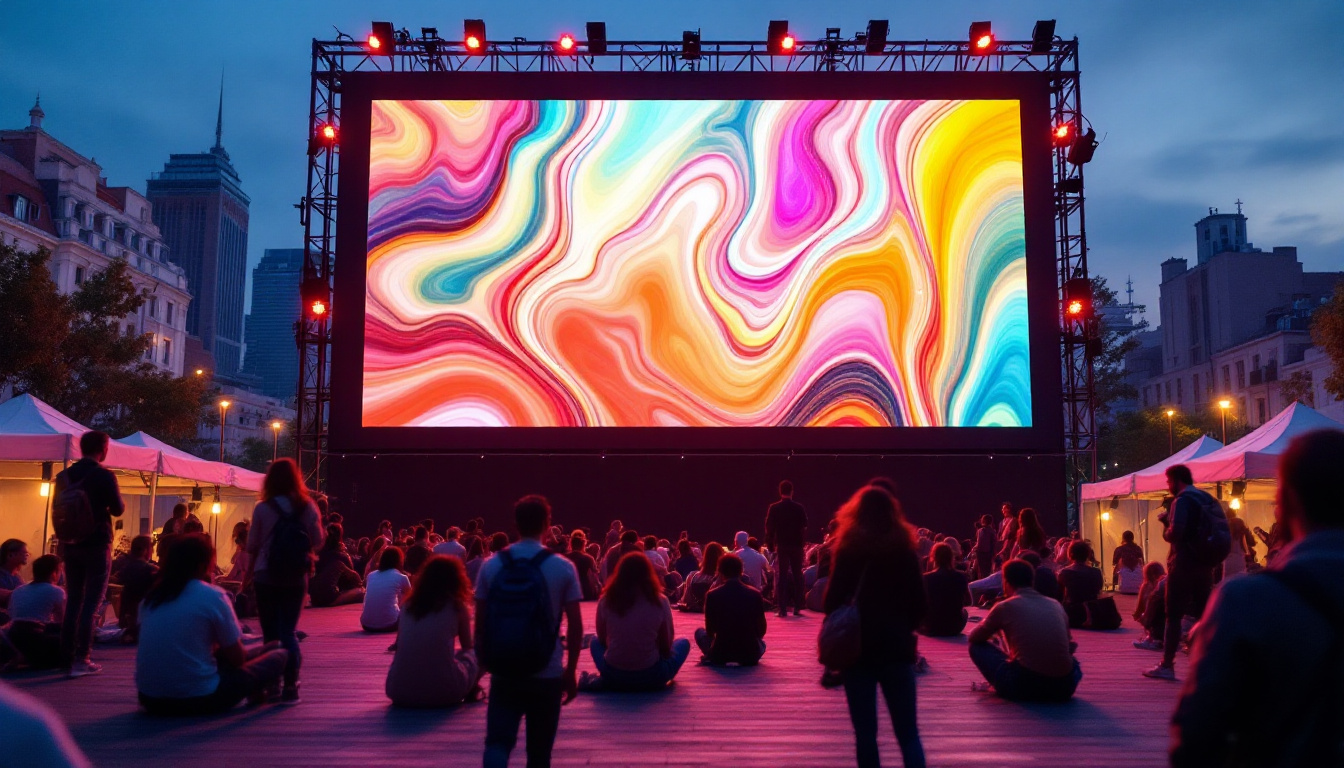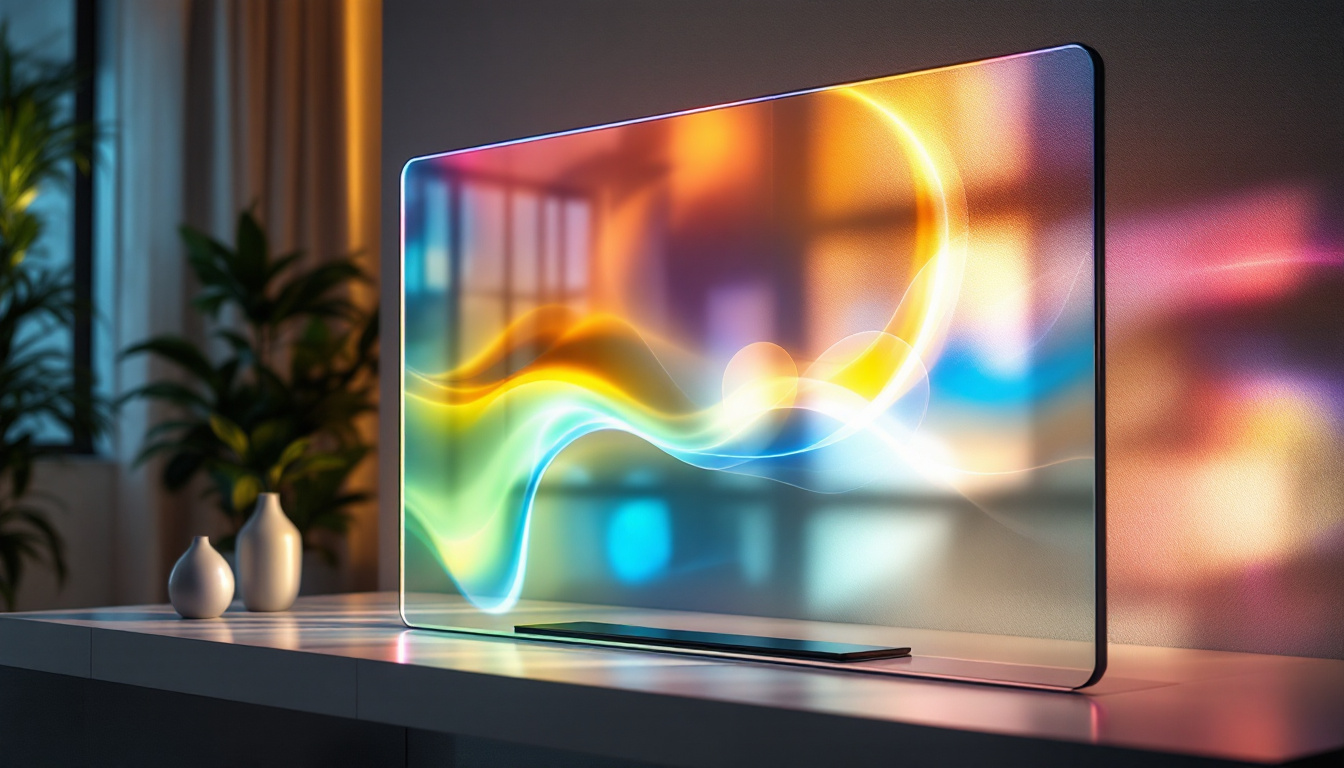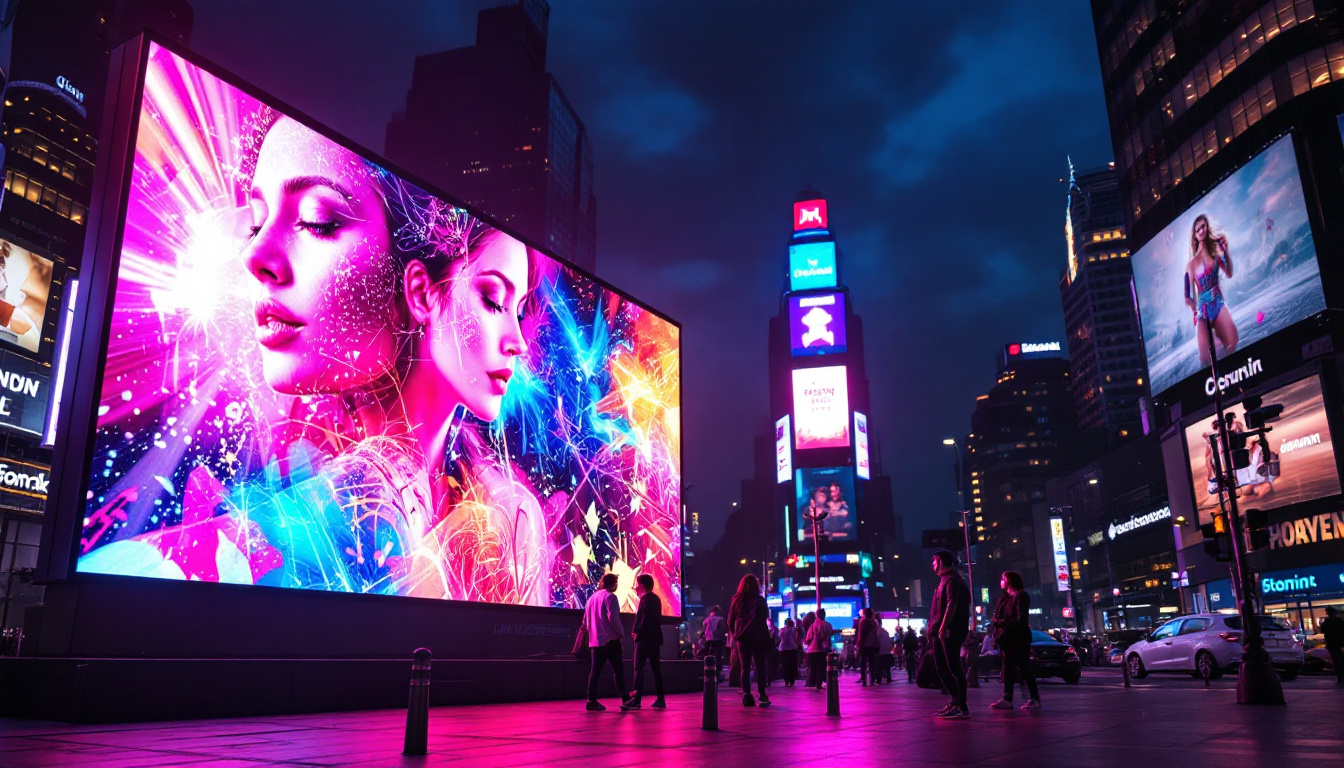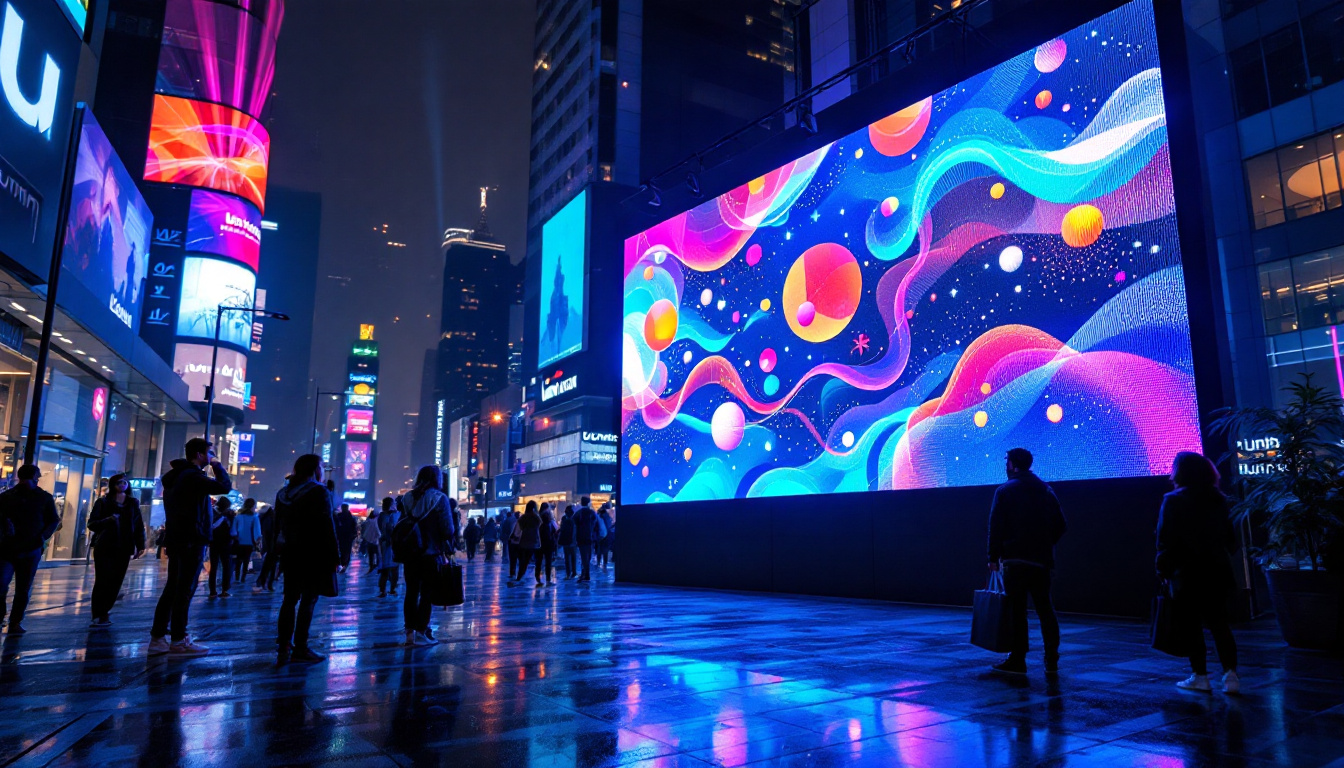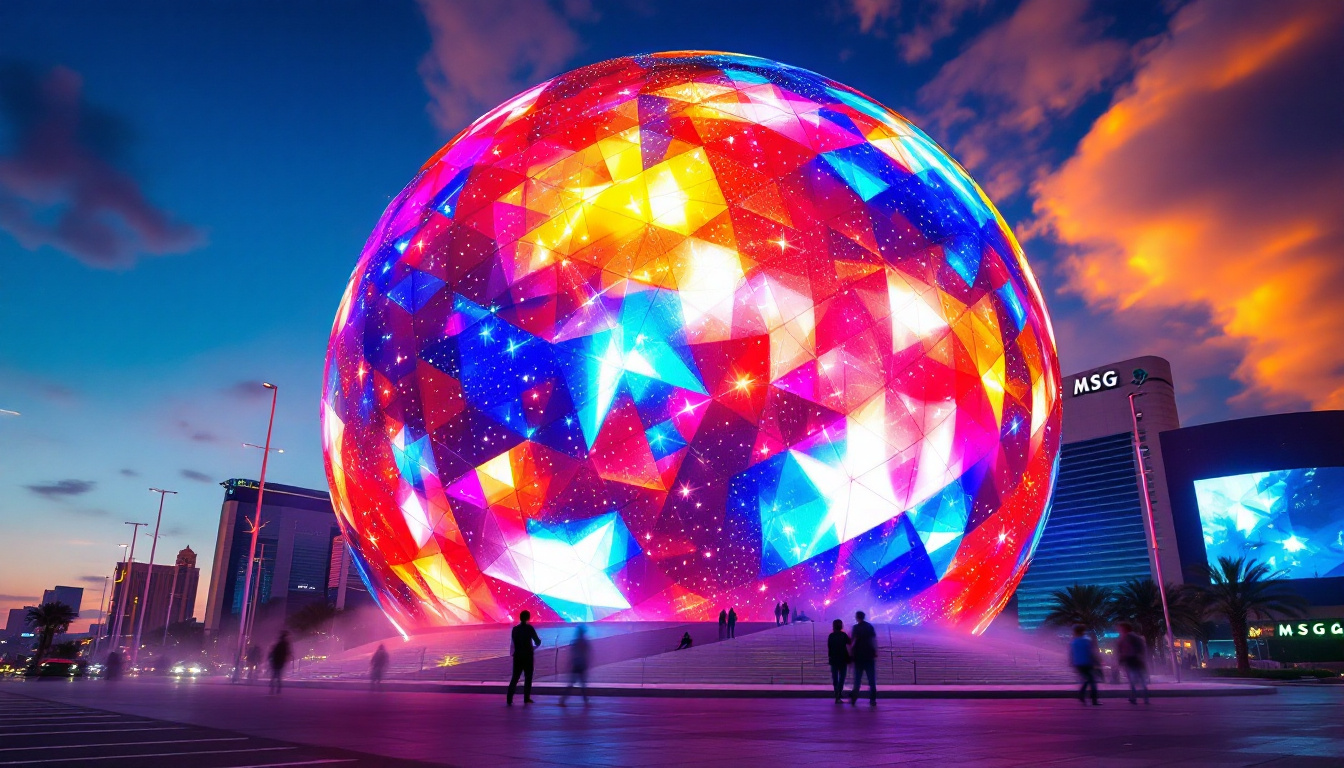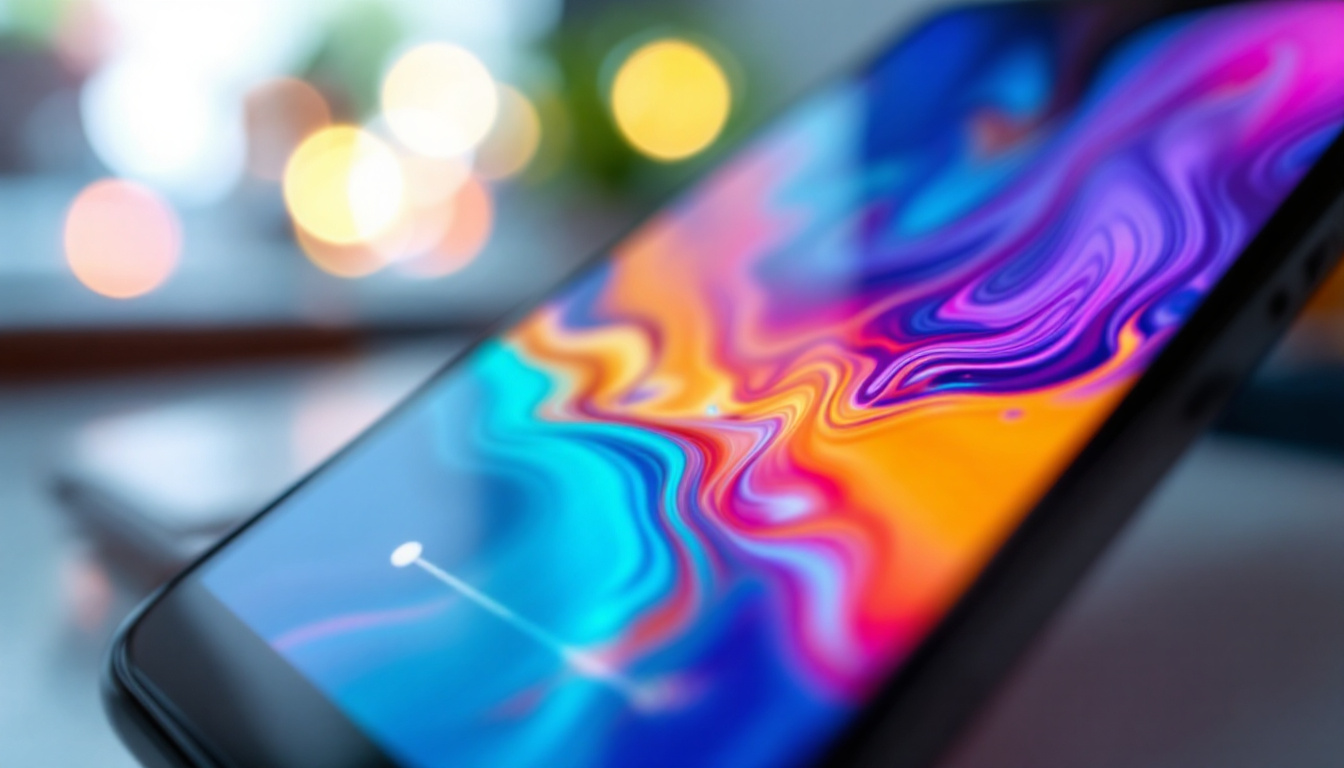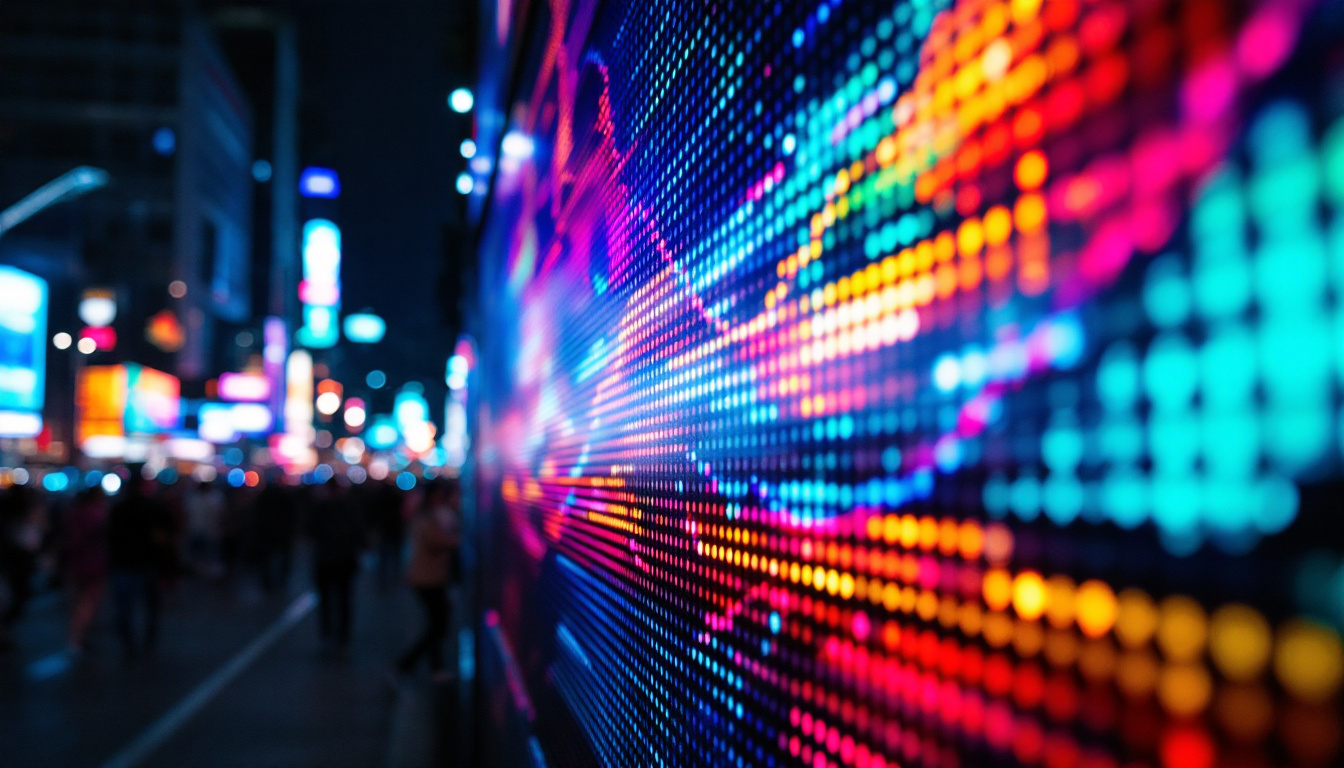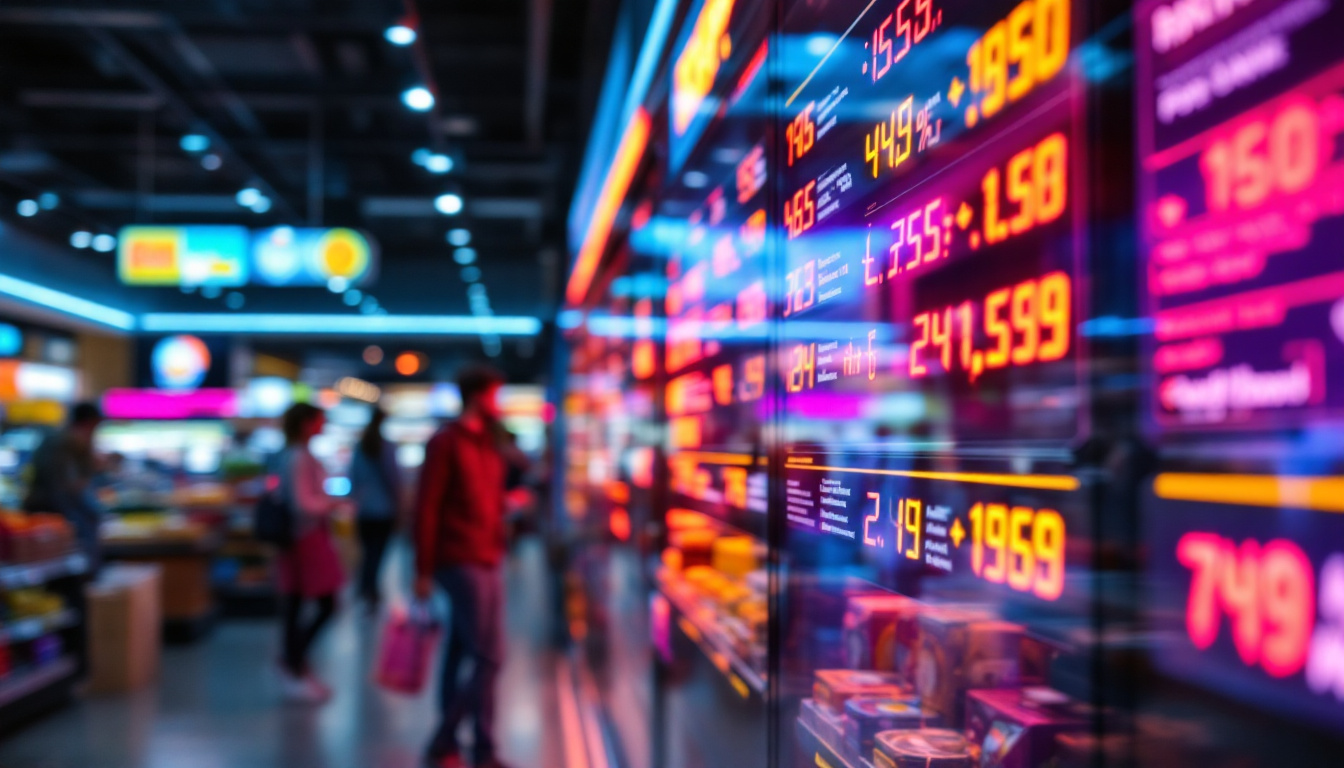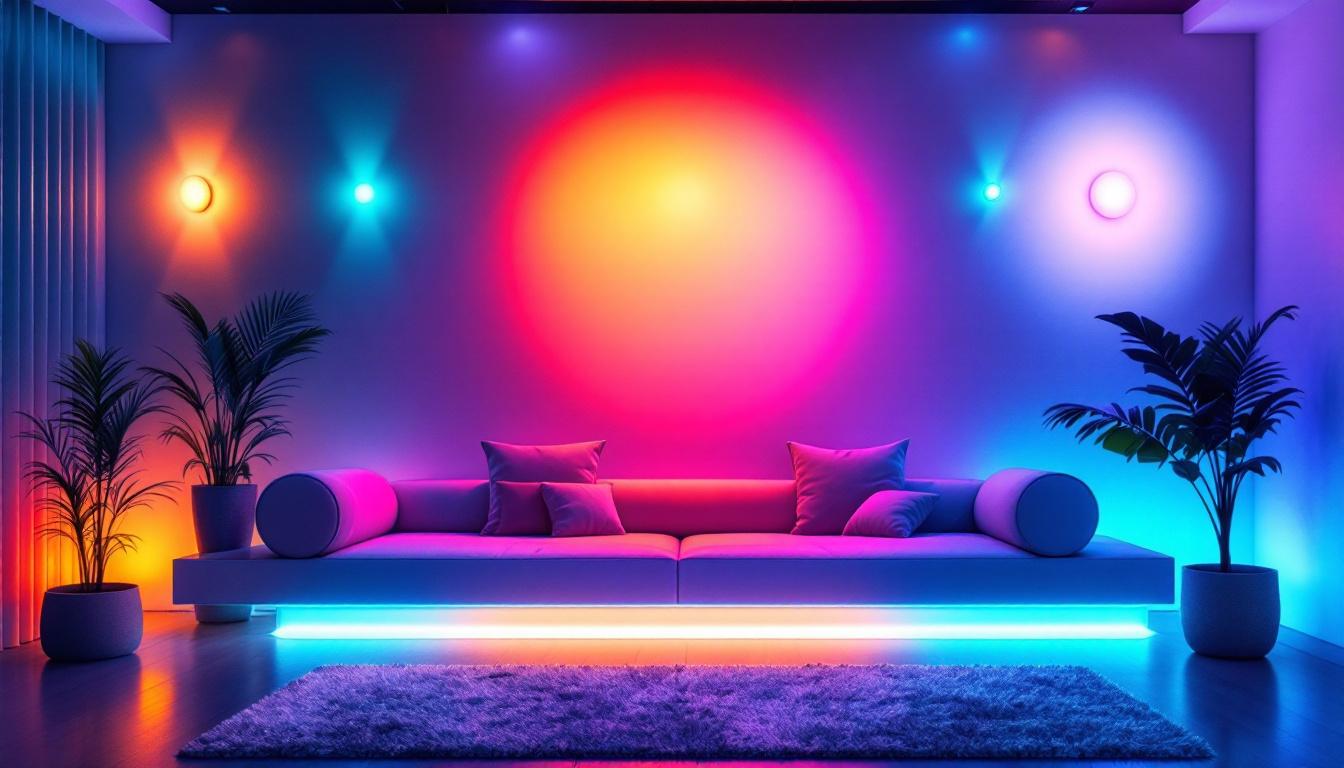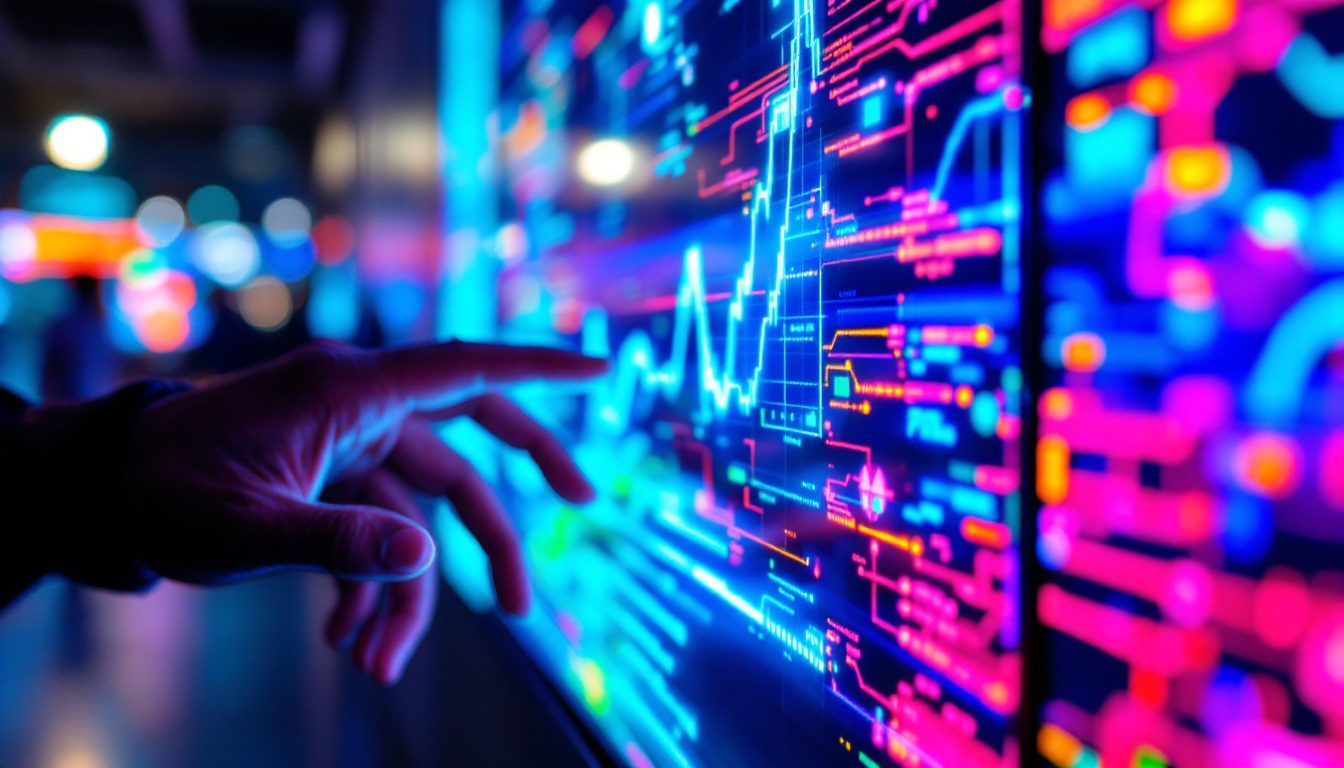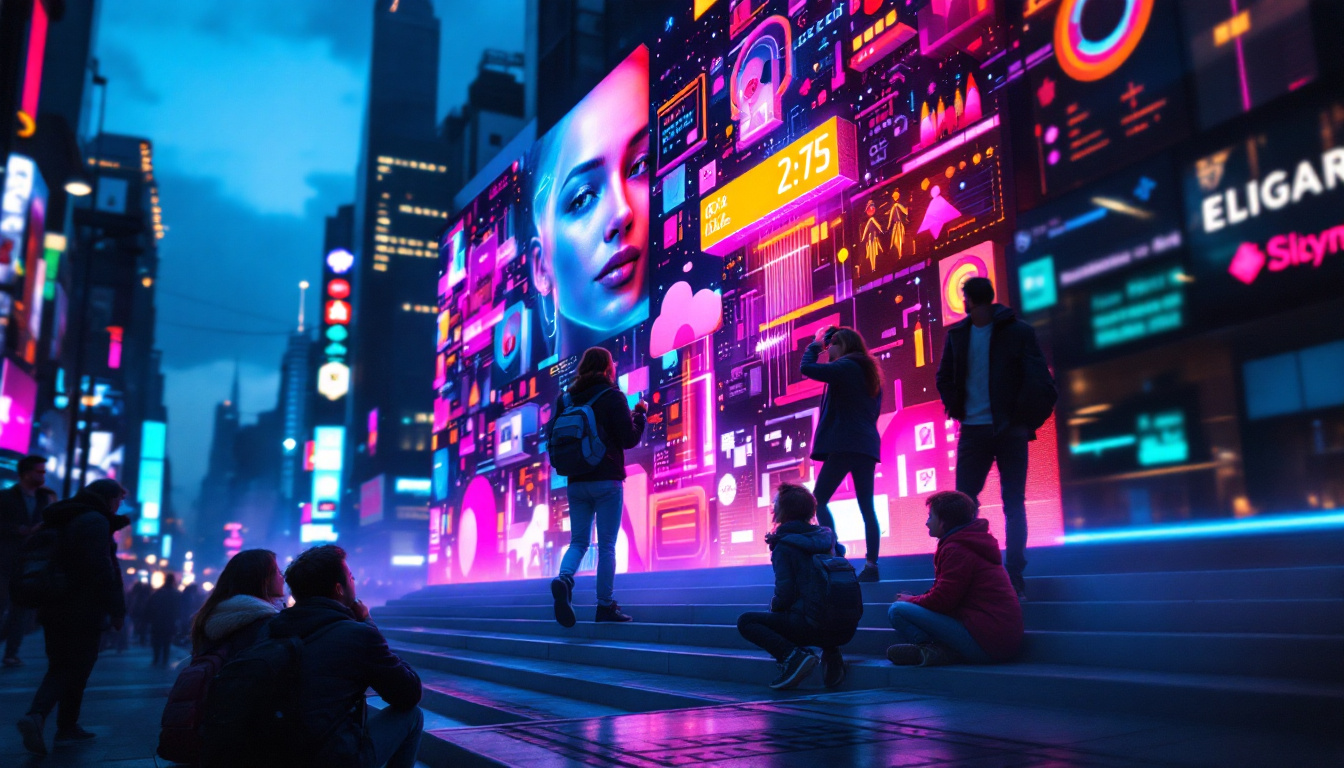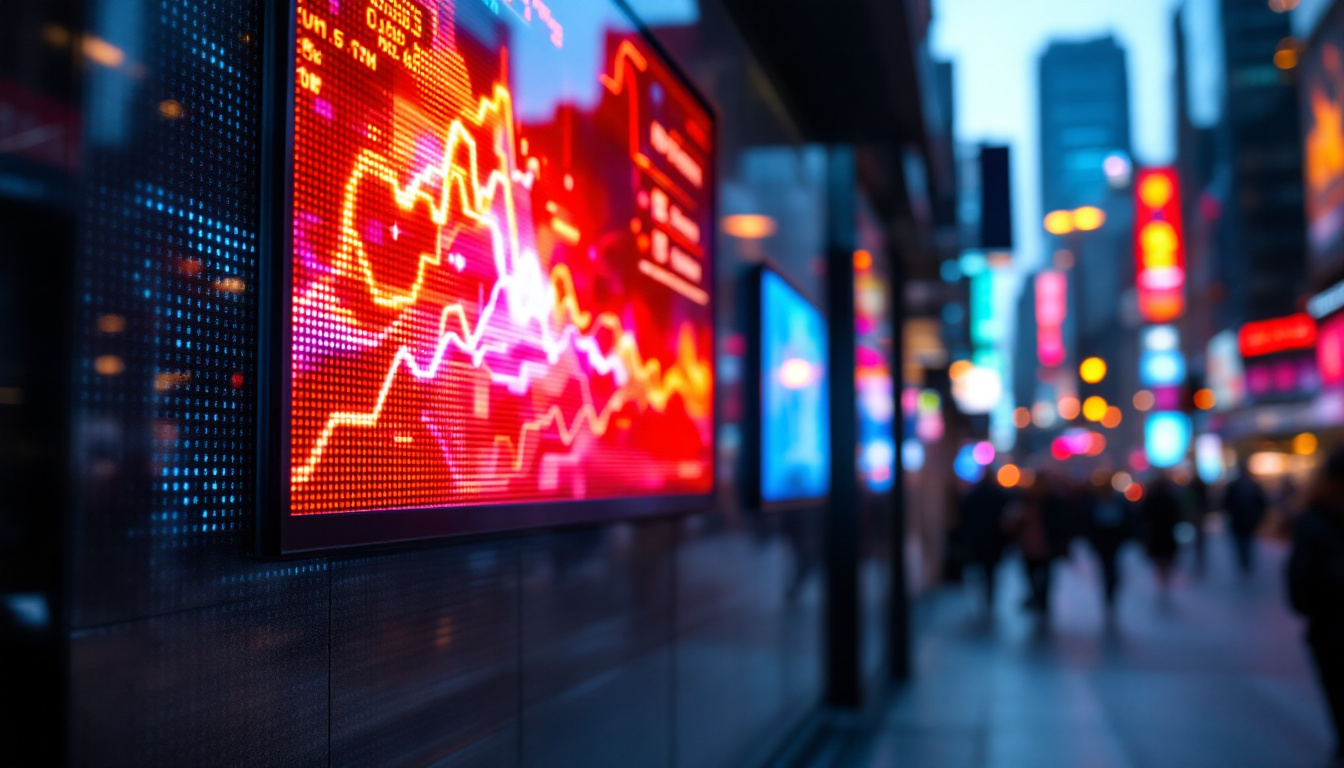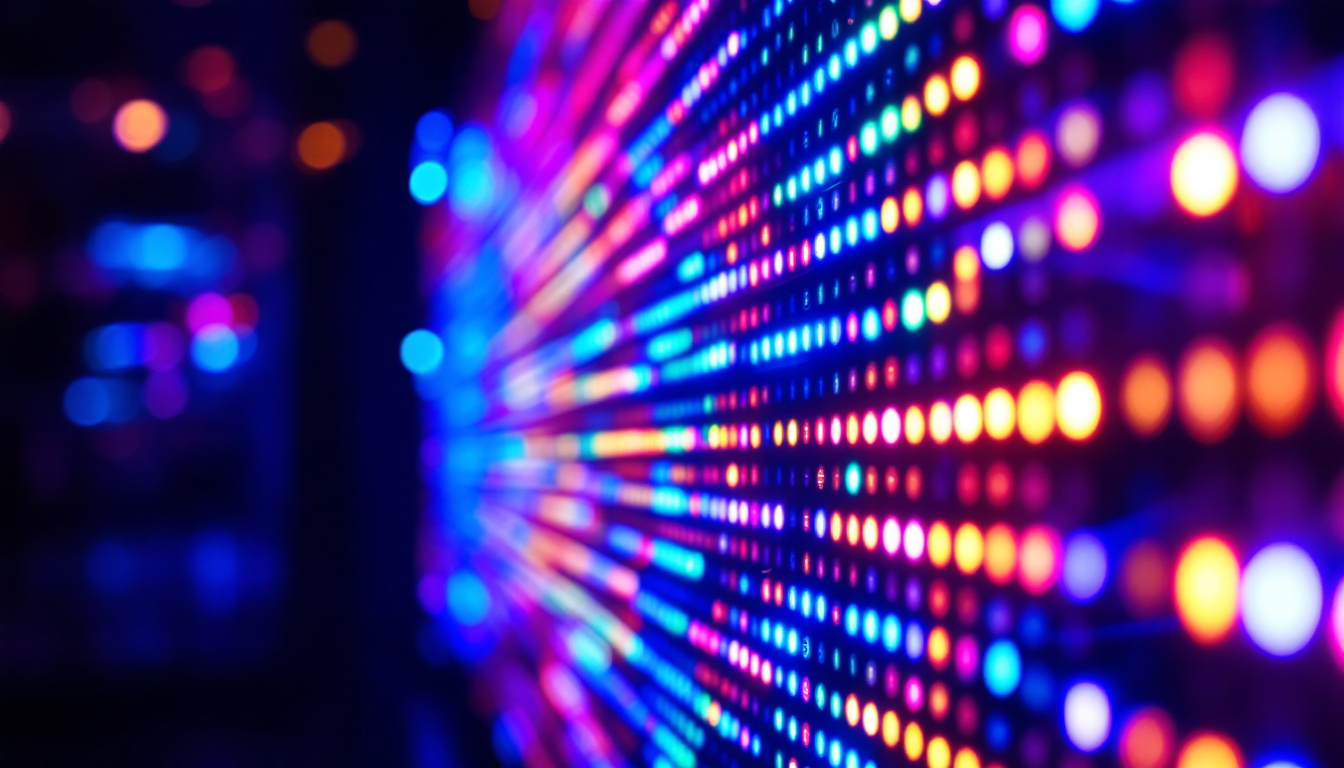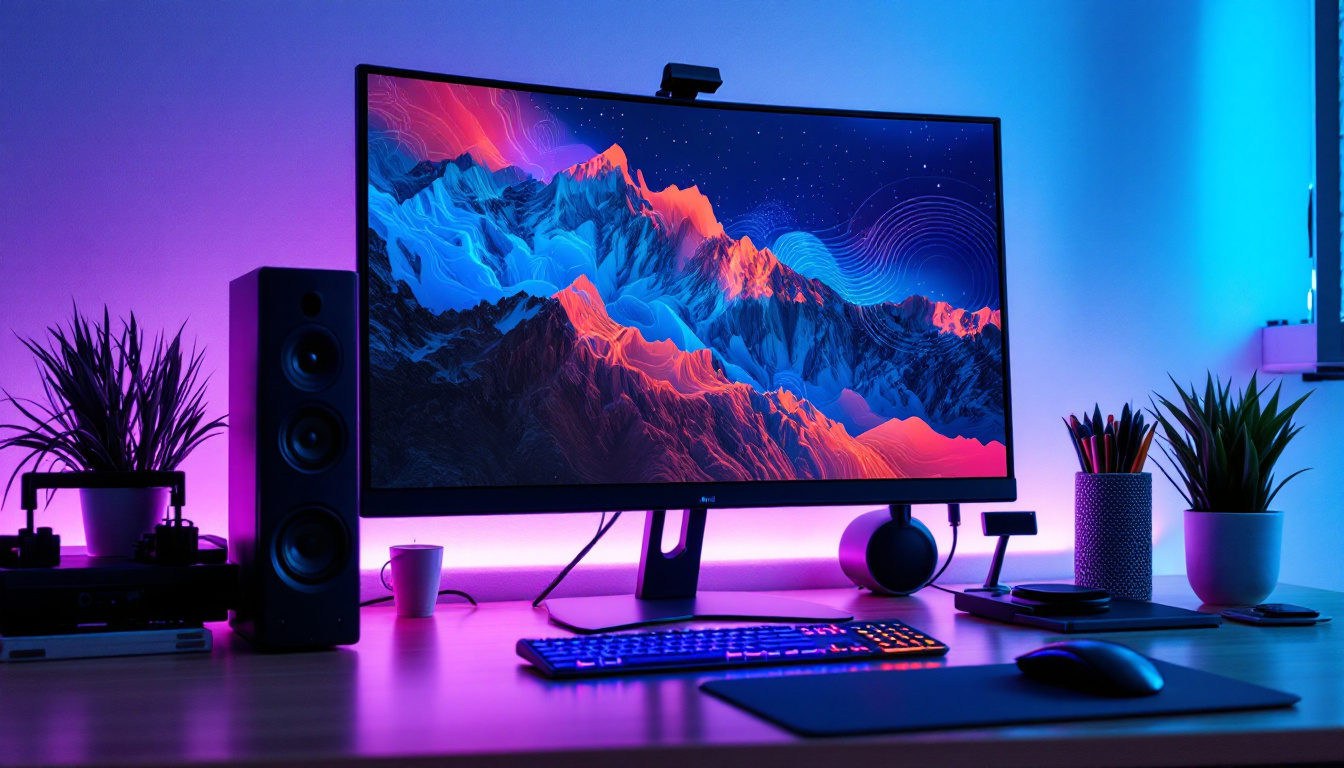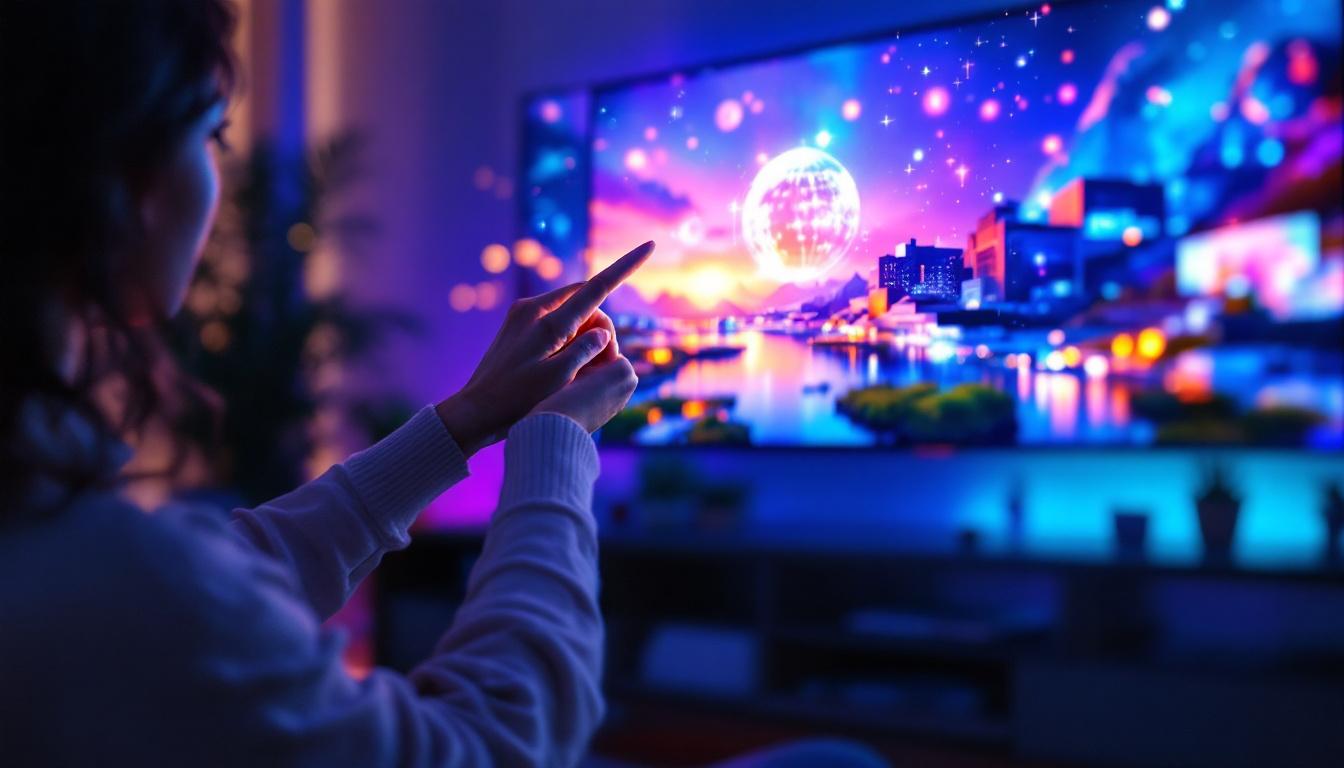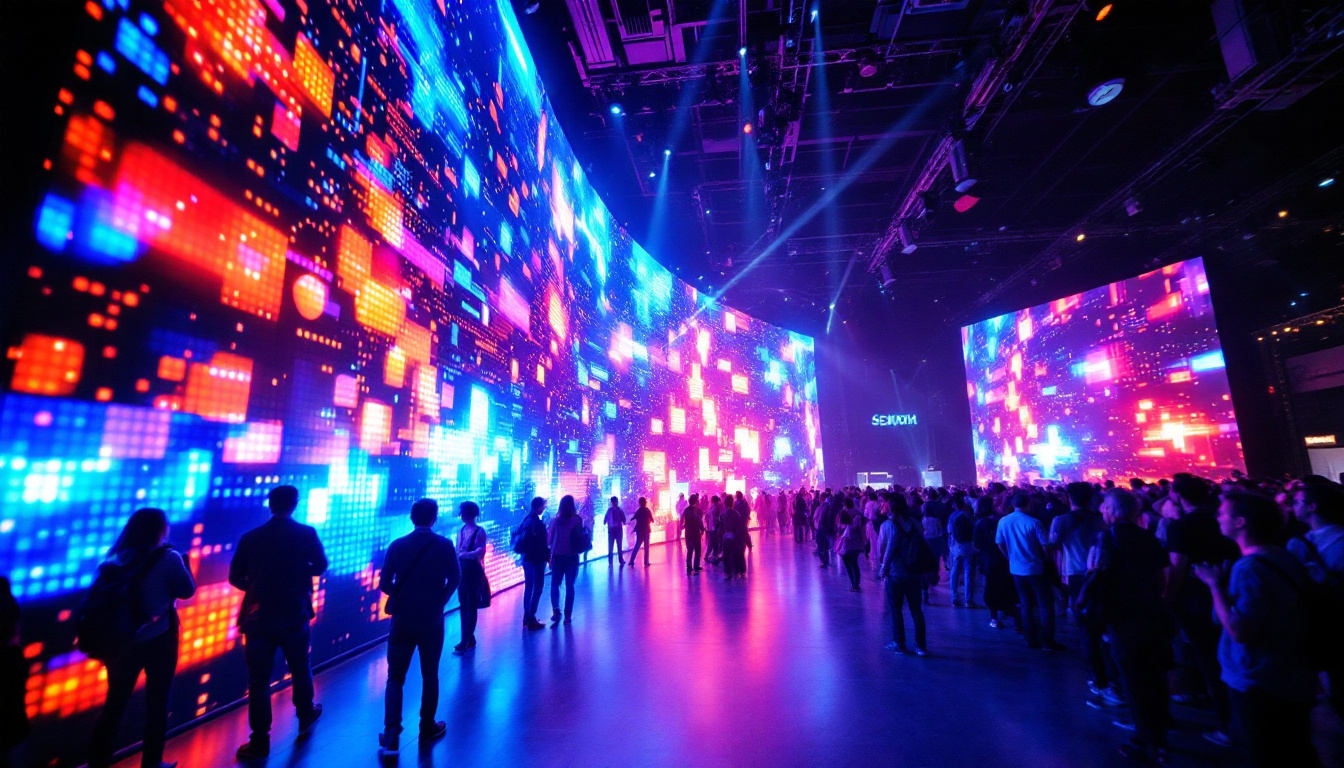In the rapidly evolving world of technology, the demand for innovative display solutions has surged. Among the various technologies available, LED (Light Emitting Diode) displays have emerged as a frontrunner, particularly in the realm of flexible computer displays. This article delves into the intricacies of LED displays, exploring their functionality, advantages, and applications in flexible formats.
Understanding LED Technology
LED technology has transformed the landscape of visual displays. Unlike traditional display technologies such as LCD or CRT, LEDs utilize semiconductor materials to emit light when an electric current passes through them. This fundamental difference not only enhances brightness but also improves energy efficiency. As a result, LED displays consume significantly less power compared to their predecessors, making them a more sustainable choice for both consumers and businesses. The longevity of LED technology also contributes to its appeal, with many LED lights lasting tens of thousands of hours, far exceeding the lifespan of traditional bulbs.
How LED Displays Work
At the core of LED displays are tiny diodes that produce light. These diodes are arranged in a grid, forming pixels that can change color and brightness. When combined with a controller, these pixels can create intricate images and videos. The flexibility of the display comes from the use of organic materials in some LED configurations, allowing them to bend and adapt to various shapes. This adaptability has led to innovative applications, such as curved screens and even flexible displays that can be rolled up or shaped to fit unconventional spaces. Furthermore, advancements in technology have enabled higher resolutions, allowing for sharper images and more detailed visuals that enhance the viewing experience.
Types of LED Displays
There are several types of LED displays, each serving different purposes. The most common types include:
- Direct View LED (DVLED): Used primarily in large screens for advertising and events, DVLED displays are composed of individual LEDs that form the entire image.
- Organic LED (OLED): These displays utilize organic compounds to emit light and are known for their vibrant colors and deep blacks, making them ideal for high-end televisions and smartphones.
- Mini LED: A newer technology that uses smaller LEDs for backlighting LCD panels, enhancing contrast and color accuracy.
In addition to these, there are also MicroLED displays, which consist of microscopic LEDs that can create self-emissive pixels, similar to OLED but with even better brightness and efficiency. This technology is still emerging but holds great promise for future applications in both consumer electronics and large-scale displays. Furthermore, LED technology continues to evolve with innovations such as smart LEDs, which can be controlled via apps and integrated into smart home systems, allowing for personalized lighting experiences that can be adjusted based on mood or activity.
The Advantages of Flexible LED Displays
Flexible LED displays offer numerous advantages over traditional rigid displays. Their unique properties make them suitable for a wide range of applications, from consumer electronics to industrial uses.
Design Versatility
One of the most significant benefits of flexible LED displays is their design versatility. Manufacturers can create screens that bend, curve, or even roll, allowing for innovative product designs. This flexibility enables the integration of displays into unconventional surfaces, such as walls, furniture, and even clothing. For instance, in retail environments, flexible displays can be wrapped around pillars or used as dynamic signage that adapts to the shape of the space, creating an immersive shopping experience that captures customer attention.
Lightweight and Thin
Flexible LED displays are typically thinner and lighter than their rigid counterparts. This characteristic not only makes them easier to transport and install but also reduces the overall weight of devices, which is crucial for portable electronics. Their slim profile allows for seamless integration into various environments without compromising aesthetics. Additionally, the lightweight nature of these displays opens up new possibilities for wearable technology, where comfort and functionality are paramount. Imagine smart clothing that can display notifications or health data without adding bulk, enhancing both style and utility for the user.
Energy Efficiency
Another compelling advantage of flexible LED displays is their energy efficiency. These displays often consume less power than traditional screens, making them an environmentally friendly option. With advancements in technology, manufacturers are continually improving the energy consumption rates of flexible LEDs, which not only helps reduce operational costs but also extends the lifespan of the display. This is particularly beneficial for applications in public installations or large-scale advertising, where displays are required to run for extended periods without incurring high energy bills.
Enhanced Durability
Flexible LED displays are designed to withstand a variety of environmental conditions, making them more durable than traditional displays. Their construction often includes materials that are resistant to impact, moisture, and temperature fluctuations. This durability is essential for outdoor applications, where displays are exposed to the elements and require reliable performance. Furthermore, the ability to bend and flex without breaking means that these displays are less likely to suffer from damage due to accidental drops or impacts, ensuring longevity and reducing maintenance costs.
Applications of Flexible LED Displays
The applications of flexible LED displays are vast and varied, spanning multiple industries. Their adaptability makes them a popular choice for both consumer and commercial use.
Consumer Electronics
In the realm of consumer electronics, flexible LED displays have made significant strides. Smartphones and tablets are increasingly adopting flexible screens, allowing for foldable and rollable designs. These innovations not only enhance user experience but also open new avenues for device functionality. For instance, manufacturers are exploring ways to integrate flexible displays into wearable technology, such as smartwatches and fitness bands, providing users with larger screens without compromising on comfort or portability. As technology advances, we may soon see flexible displays that can be worn as clothing or accessories, further blurring the lines between fashion and technology.
Advertising and Marketing
Flexible LED displays have revolutionized advertising and marketing strategies. Retailers are using these displays to create dynamic signage that can be easily changed to reflect promotions or seasonal themes. The ability to bend and shape displays allows for eye-catching installations that attract customers’ attention. Beyond traditional storefronts, flexible LED technology is also being utilized in public spaces, such as airports and train stations, where large, curved displays can provide real-time information and advertisements in a visually striking manner. This adaptability not only enhances the aesthetic appeal of the environment but also engages consumers in a more interactive way, potentially increasing brand loyalty and sales.
Automotive Displays
The automotive industry is also embracing flexible LED technology. From dashboard displays to exterior lighting, flexible LEDs offer design freedom and enhanced functionality. They can be integrated into curved surfaces, providing drivers with essential information in a visually appealing manner. Furthermore, the use of flexible displays in vehicles extends to advanced driver-assistance systems (ADAS), where they can be employed to create heads-up displays that project critical data directly onto the windshield. This integration not only enhances safety by keeping drivers informed without diverting their attention from the road but also paves the way for more sophisticated vehicle interfaces that adapt to user preferences and driving conditions.
The Future of Flexible LED Displays
As technology continues to advance, the future of flexible LED displays looks promising. Ongoing research and development are focused on enhancing performance, reducing costs, and expanding applications.
Innovations on the Horizon
Future innovations may include improved resolution and color accuracy, making flexible LED displays even more appealing for high-definition applications. Additionally, advancements in materials science could lead to more durable and energy-efficient displays, further broadening their appeal.
Integration with Emerging Technologies
Flexible LED displays are likely to play a crucial role in the integration of emerging technologies such as augmented reality (AR) and virtual reality (VR). As these technologies become more mainstream, the need for flexible, high-quality displays will increase, paving the way for new user experiences.
Challenges Facing Flexible LED Displays
Despite their numerous advantages, flexible LED displays also face challenges that need to be addressed for widespread adoption. Understanding these challenges is crucial for manufacturers and consumers alike.
Cost Implications
Currently, the production of flexible LED displays can be more expensive than traditional displays. The materials and technology required to manufacture these displays contribute to higher costs, which can deter some consumers and businesses from making the switch. As production techniques improve and economies of scale are achieved, prices are expected to decrease.
Durability Concerns
While flexible LED displays are designed to be lightweight and adaptable, their durability can be a concern. Bending and flexing can lead to wear and tear over time, potentially affecting performance. Ongoing research is focused on improving the lifespan and resilience of these displays to ensure they can withstand daily use.
Conclusion
Flexible LED displays represent a significant advancement in display technology, offering unique advantages that cater to the needs of modern consumers and industries. With their versatility, lightweight design, and potential for innovative applications, these displays are poised to reshape how we interact with technology.
As the technology continues to evolve, addressing the challenges of cost and durability will be essential for widespread adoption. The future of flexible LED displays is bright, promising exciting developments that could redefine our visual experiences across various sectors.
In summary, flexible LED displays are not just a trend; they are a glimpse into the future of display technology, where adaptability and innovation will drive the next wave of advancements. Embracing this technology will undoubtedly lead to new possibilities in design, functionality, and user engagement.
Discover the Future of LED Displays with LumenMatrix
Ready to experience the next level of visual display technology? LumenMatrix invites you to explore our comprehensive range of LED display solutions, designed to captivate and engage your audience. From vibrant Indoor LED Wall Displays to dynamic Outdoor LED Wall Displays, and from versatile Vehicle LED Displays to innovative LED Sports Displays, our offerings are tailored to elevate your brand’s presence. Whether you’re looking for a Custom LED Display, an All-in-One LED Display solution, or the sleek aesthetics of an LED Transparent Display, LumenMatrix is your partner in revolutionizing visual communication. Check out LumenMatrix LED Display Solutions today and transform your space into a canvas of endless possibilities.

